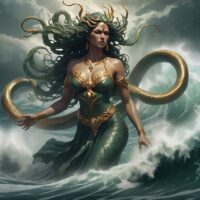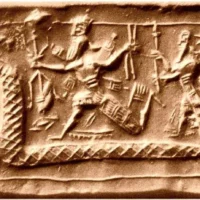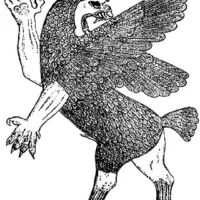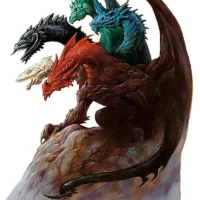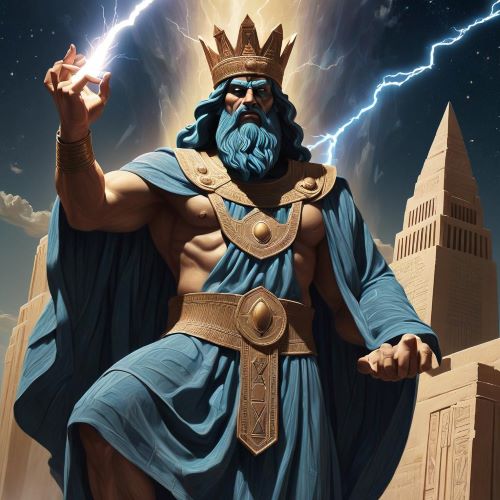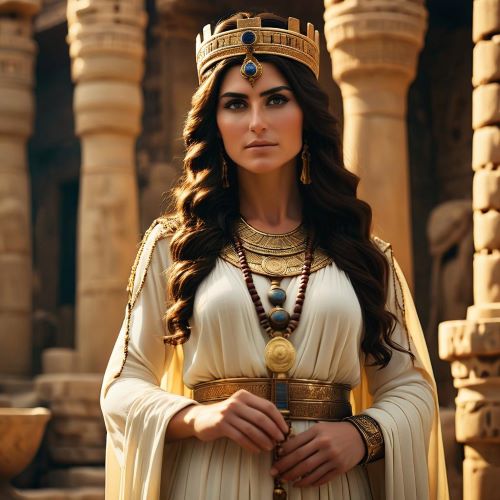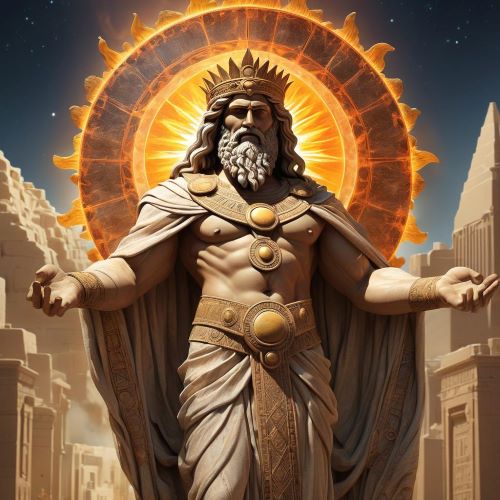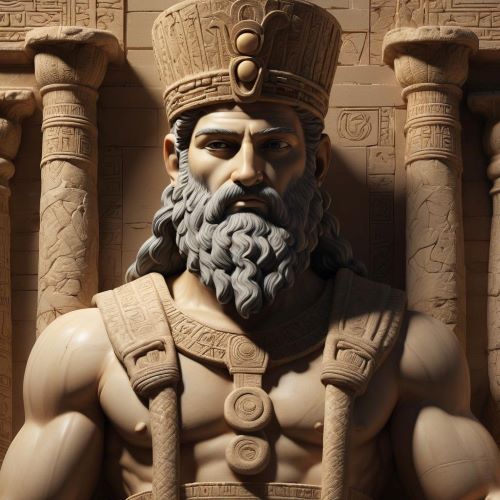Tiamat : The Primordial Goddess
Listen
At a glance
| Description | |
|---|---|
| Origin | Babylonian Mythology |
| Classification | Gods |
| Family Members | Lahmu, Lahamu (Children) |
| Region | Iraq |
| Associated With | Creation |
Tiamat
Introduction
Tiamat is a central figure in ancient Mesopotamian mythology, primarily known from the Babylonian creation epic, the Enuma Elish. She personifies the primordial sea and is integral to the universe’s creation narrative. As a primordial goddess, Tiamat embodies the untamed power of the ocean and the raw chaos of creation. Feared and revered, she symbolizes both the source of life and the destructive potential of nature. Originating from Babylonian cosmology, Tiamat represents primordial chaos, the saltwater ocean, and the mother of all creation. Her mythic tale depicts a cosmic struggle where chaos confronts order, resulting in the universe’s formation.
Physical Traits
While definitive depictions of Tiamat from ancient Mesopotamia are scarce, the Babylonian epic Enuma Elish provides intriguing descriptions. Tiamat is portrayed with both anthropomorphic and monstrous qualities, embodying primordial chaos. Descriptions often highlight her ferocious nature, characterized by a gaping maw and a fearsome roar. She churns the cosmic waters, symbolizing untamed power. Later interpretations frequently depict her as a massive serpent or dragon, aligning with her chaotic essence.
Variations in Tiamat’s portrayal include her having multiple heads or appearing as a colossal sea serpent. These representations emphasize her dominance over natural forces and her terrifying presence. Whether depicted with anthropomorphic features, such as breasts, or as a fearsome creature with shimmering scales, Tiamat’s image remains a powerful testament to her significance in Babylonian mythology. Her ever-changing, awe-inspiring form reflects her role as a symbol of chaos and the raw forces of nature.
Family
In the Enuma Elish, Tiamat mingles her waters with those of Apsu, the god of groundwater, producing the first generation of deities, including Lahmu and Lahamu. After Apsu’s death, she takes Kingu as her consort. Tiamat is a divine being with significant familial ties, often called the mother of all creation. Her union with Apsu leads to the birth of the Anunnaki, the first gods. However, their offspring rebel, initiating a cosmic conflict that shapes the universe.
Tiamat’s family reflects the Babylonian creation myth. Her relationship with Apsu, representing freshwater, results in the birth of Lahmu and Lahamu, who in turn give rise to Anshar and Kishar, symbolizing the heavens and earth. This lineage makes Tiamat the grandmother of the cosmos, with all Babylonian gods descending from her. The tranquility she and Apsu enjoyed is disrupted by the younger gods’ exuberance, leading to a rift. Ultimately, Tiamat turns against her own children, setting the stage for a dramatic cosmic battle.
Other names
Throughout history, Tiamat has been known by various names and titles across different cultures and mythologies. In Sumerian mythology, she is occasionally equated with Nammu, the primordial mother who birthed the universe. Later Babylonian texts refer to her as “Tiamtu” or “Tehom,” emphasizing her association with the chaotic waters of creation. In contemporary times, Tiamat’s name has become synonymous with primordial chaos, embraced by writers, artists, and gamers seeking to evoke ancient mystery and power.
The significance of Tiamat’s name lies in its derivation from the Akkadian word “tiamatum,” meaning “sea,” which underscores her essence as the embodiment of the primordial ocean. She is also known by the epithet “Ummu-Hubur,” translating to “Mother of Creation,” emphasizing her role as the progenitor of all life. Tiamat’s name originates from the Akkadian term for the sea, “tâmtu.” Additionally, connections exist between Tiamat and the Greek words for sea, “thalassa” and “thaláttē.” Some sources link Tiamat with the Hebrew term “tehom” (“the deeps, abyss”) mentioned in the Book of Genesis.
Powers and Abilities
Tiamat, as the embodiment of primordial chaos, wields unimaginable powers that transcend mortal comprehension. Commanding the forces of the ocean, she can unleash devastating floods, storms, and tidal waves with ease. Her mere presence strikes fear into the hearts of both gods and mortals, representing the untamed essence of the natural world. Tiamat’s influence extends beyond the physical realm, shaping the destiny of gods and men alike.
As a primordial goddess, Tiamat possesses immense power, symbolizing the churning, chaotic sea. She exhibits incredible physical strength and can unleash destructive storms at will. Described in the Enuma Elish as a monstrous force, Tiamat gives birth to monstrous offspring to serve her purposes. Furthermore, she embodies the raw power of creation and destruction as a formidable chthonic deity.
In her role as the primordial sea, Tiamat is imbued with immense power. She births the first generation of gods and later engages in warfare against them. In her fury, she creates a host of monstrous creatures as weapons. Additionally, Tiamat holds the Tablet of Destinies, signifying her authority over divine rulership.
Despite her formidable power, Tiamat meets her demise in the Enuma Elish. Incensed by the disruptive energy of the younger gods, she conspires to eradicate them. Crafting an army of monstrous offspring including dragons and vipers, she intends to obliterate the emerging pantheon. However, the young god Marduk, embodying order and civilization, confronts Tiamat. Engaging in a fierce battle, Marduk employs strategic prowess and formidable winds to ensnare Tiamat, cleaving her body in two. From her sundered form, Marduk fashions the heavens and the earth, laying the foundations of the cosmos and asserting his supremacy as the new ruler of the gods.
Modern Day Influence
Tiamat’s mythos, though ancient, remains captivating and influential across global cultures. Her image is celebrated in various art forms, from literature to popular culture, symbolizing primal power and untamed nature. In modern fantasy literature and gaming, she often appears as a fearsome dragon or sea serpent, representing chaotic magic and destruction. Scientists and astronomers also pay homage to her mythic legacy by naming celestial bodies and geological features after her.
Her influence transcends time, as she continues to be depicted as a dragon or serpent in contemporary media. Notably, she serves as inspiration for creatures in Dungeons & Dragons and remains a recurring theme in literature and video games. Tiamat’s story, embodying chaos amidst creation and order, resonates in modern times. Her portrayal as a powerful female deity intersects with feminist interpretations, highlighting struggles against patriarchal structures.
Beyond entertainment, Tiamat’s tale serves as a poignant reminder of the balance between order and chaos, creation and destruction. She embodies the untamed forces of nature that shape our world. As humanity explores the mysteries of the universe and the depths of the oceans, Tiamat stands as a potent symbol of the primal energies that birthed all existence.
Related Images
Frequently Asked Questions
What is lorem Ipsum?
I am text block. Click edit button to change this text. Lorem ipsum dolor sit amet, consectetur adipiscing elit. Ut elit tellus, luctus nec ullamcorper mattis, pulvinar dapibus leo.
What is lorem Ipsum?
I am text block. Click edit button to change this text. Lorem ipsum dolor sit amet, consectetur adipiscing elit. Ut elit tellus, luctus nec ullamcorper mattis, pulvinar dapibus leo.
What is lorem Ipsum?
I am text block. Click edit button to change this text. Lorem ipsum dolor sit amet, consectetur adipiscing elit. Ut elit tellus, luctus nec ullamcorper mattis, pulvinar dapibus leo.
What is lorem Ipsum?
I am text block. Click edit button to change this text. Lorem ipsum dolor sit amet, consectetur adipiscing elit. Ut elit tellus, luctus nec ullamcorper mattis, pulvinar dapibus leo.
What is lorem Ipsum?
I am text block. Click edit button to change this text. Lorem ipsum dolor sit amet, consectetur adipiscing elit. Ut elit tellus, luctus nec ullamcorper mattis, pulvinar dapibus leo.

